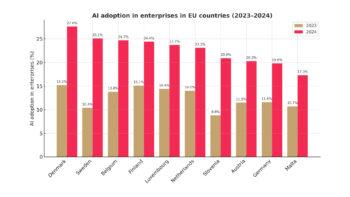Choosing the right project management tool has become one of the most important strategic challenges for today’s leaders. The market, saturated with hundreds of applications promising a revolution in productivity, often leads to decision paralysis. However, at the centre of this battle for attention are four giants: Jira, Asana, Trello and ClickUp. Deciding between them is much more than comparing feature lists; it’s choosing a fundamental working philosophy that will define your team’s culture and effectiveness for years to come.
Each of these platforms represents a different approach to work organisation. Jira, born in the world of software engineering, is the undisputed standard for technical teams. Its strength lies in its unparalleled adaptability to rigorous Agile methodologies such as Scrum. It is a tool for those who value structure, precision and granular control over every task, from epic initiatives to the tiniest bugs in the code. However, the same power that makes it indispensable for developers is its biggest barrier. For non-technical teams, Jira is often seen as overwhelming and complex, with a learning curve that can be daunting. Choosing Jira is a decision to prioritise power and process over ease of use.
In opposition to Jira’s technical focus is Asana, designed as a command centre for cross-functional business teams. Its philosophy is based on providing transparency and linking day-to-day operational work with the company’s overarching strategic goals. Asana shines where projects require coordination between marketing, sales and operations. Features such as project portfolio management and team workload planning (Workload) give managers a bird’s eye view that competitors lack. It is ideal for organisations that think in terms of objectives and key results (OKRs), needing a tool that not only tracks tasks but also progress against strategy.
At the other end of the complexity spectrum is Trello, the master of visual simplicity. Its strength lies in the brilliantly simple metaphor of a Kanban board that can be understood by anyone within minutes. Trello is the digital equivalent of a sticky note board, offering unparalleled flexibility and a near-zero barrier to entry. It is an ideal choice for small teams, startups and projects where speed of adoption and transparency are more important than advanced reporting features or complex workflows. However, Trello’s simplicity is also its biggest limitation; as projects grow in complexity and number of tasks, the lack of a more elaborate structure can lead to chaos.
The youngest and most ambitious contender is ClickUp, which enters the market with a mission to replace all other applications. Its philosophy is one of consolidation – integrating not only tasks, but also documents, chat and whiteboards into a single platform. ClickUp offers a staggering number of features and customisation options, often as part of a generous free plan. It’s a tool for ‘power users’ and organisations frustrated by having to juggle multiple applications. However, this abundance comes at a price. Users often describe the platform as overwhelming, and the plethora of options can lead to excessive complexity and performance issues.
The new battleground that is redefining the value proposition of each of these tools is artificial intelligence. Each platform implements AI in a way that reinforces its core identity. AI in Jira (Rovo) focuses on developers, translating natural language into complex JQL queries and helping with technical task planning. Asana AI acts as a strategic advisor to managers, automatically generating project status summaries and suggesting improvements to goals. In line with its philosophy, the AI in Trello (Atlassian Intelligence) streamlines simple activities such as brainstorming or summarising content on cards. ClickUp Brain is the most ambitious, aiming to create autonomous ‘AI agents’ to manage the complexity of the platform itself.
Ultimately, choosing the right tool comes down to understanding the identity and needs of your own team. If you are leading a development team working in Scrum, Jira is the only sensible choice. Its deep integration with the developer ecosystem is invaluable. For a marketing department coordinating complex campaigns, Asana, with its ability to manage portfolios and link work to goals, will be much more valuable. A small, agile start-up that values speed above all else should start with Trello, avoiding imposing unnecessary complexity on itself. Conversely, organisations struggling with ‘distributed working’ across multiple applications may find solace in ClickUp, provided they are prepared to invest time in its setup.
There is no single ‘best’ project management tool. There is only the tool best suited to your team’s culture, processes and scale. This decision is an investment in a technology partner whose philosophy will shape the way your company works, communicates and achieves goals. Choose wisely, looking not only at the current features, but more importantly at the alignment with your organisation’s DNA.












